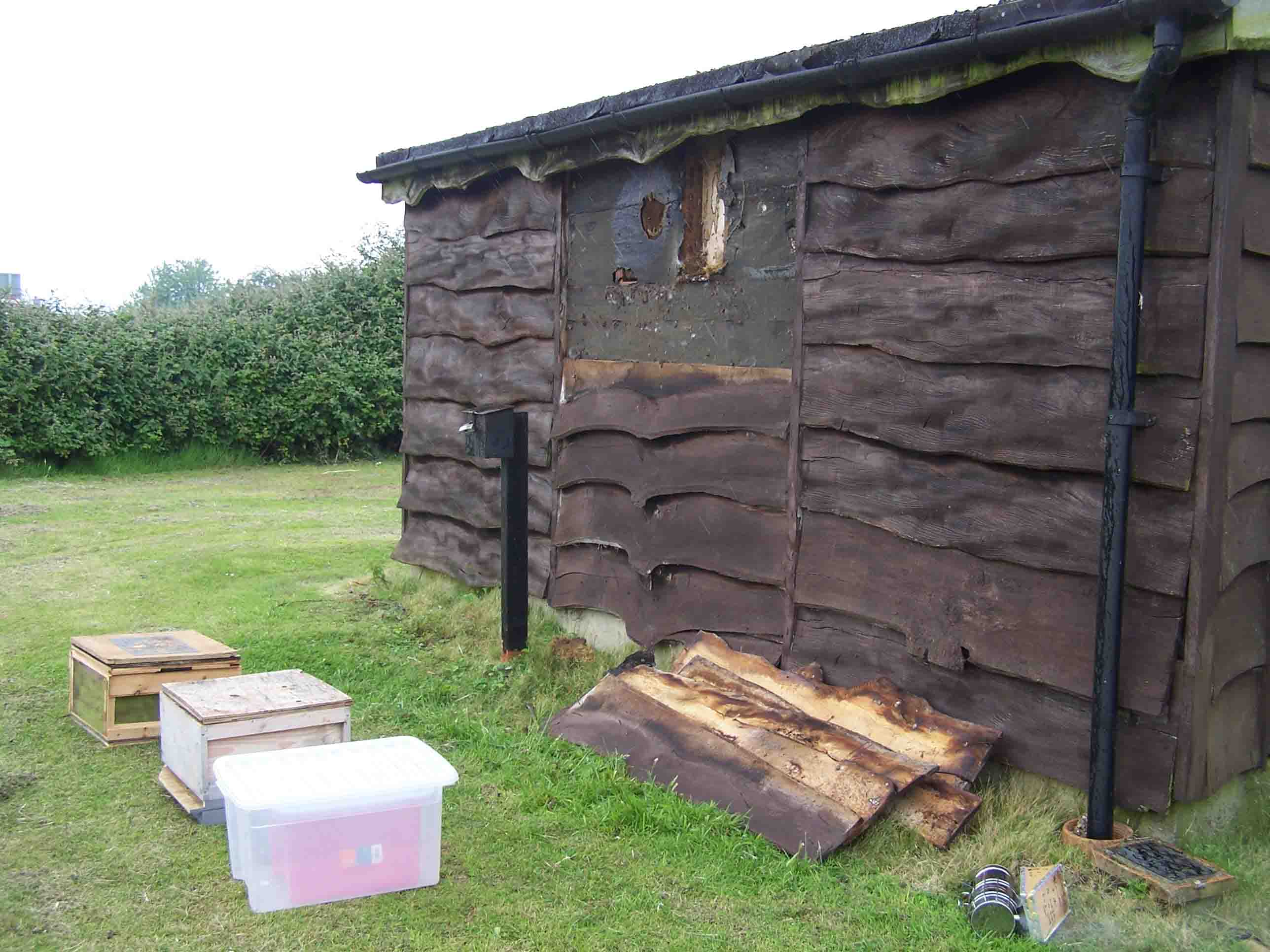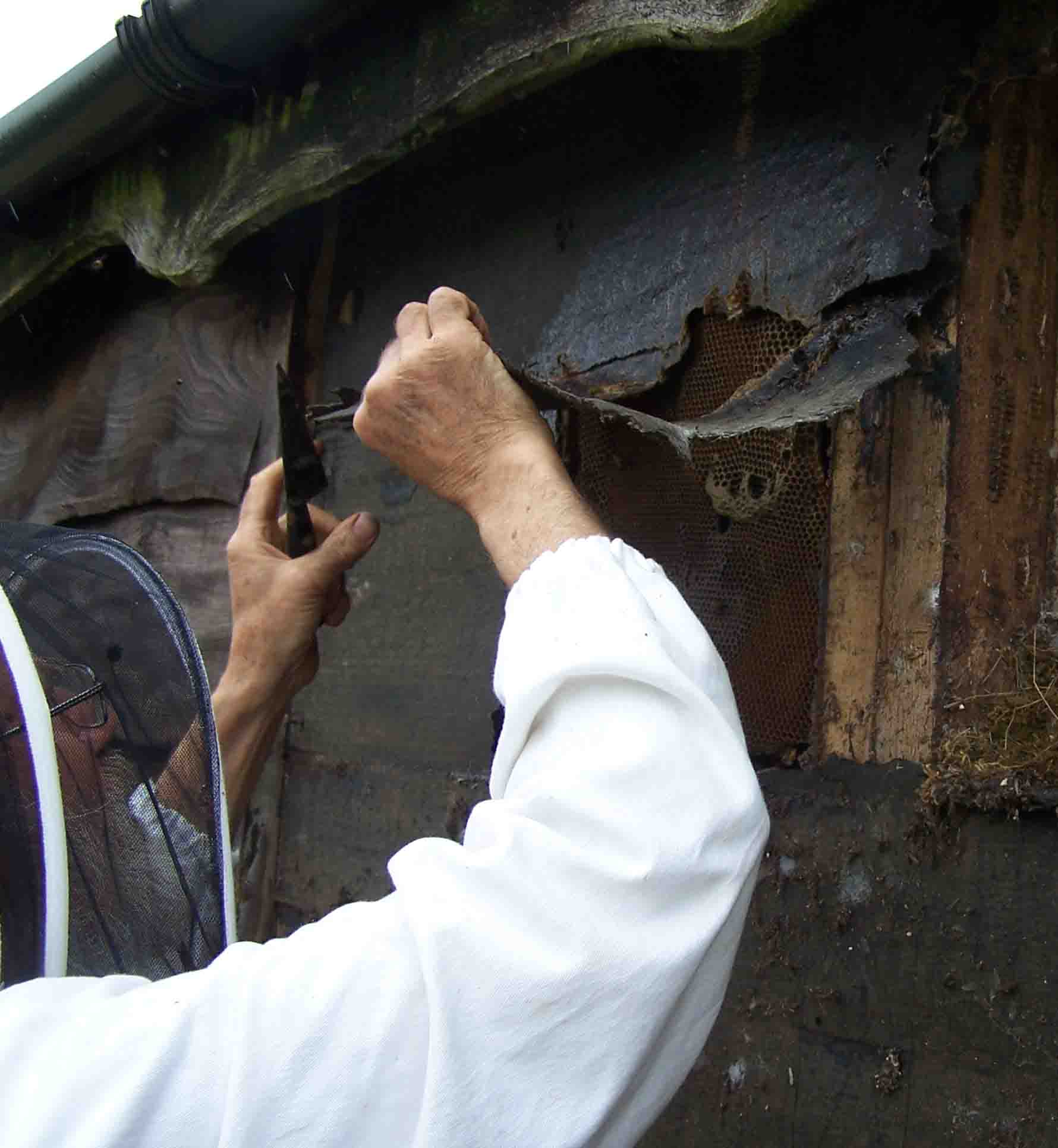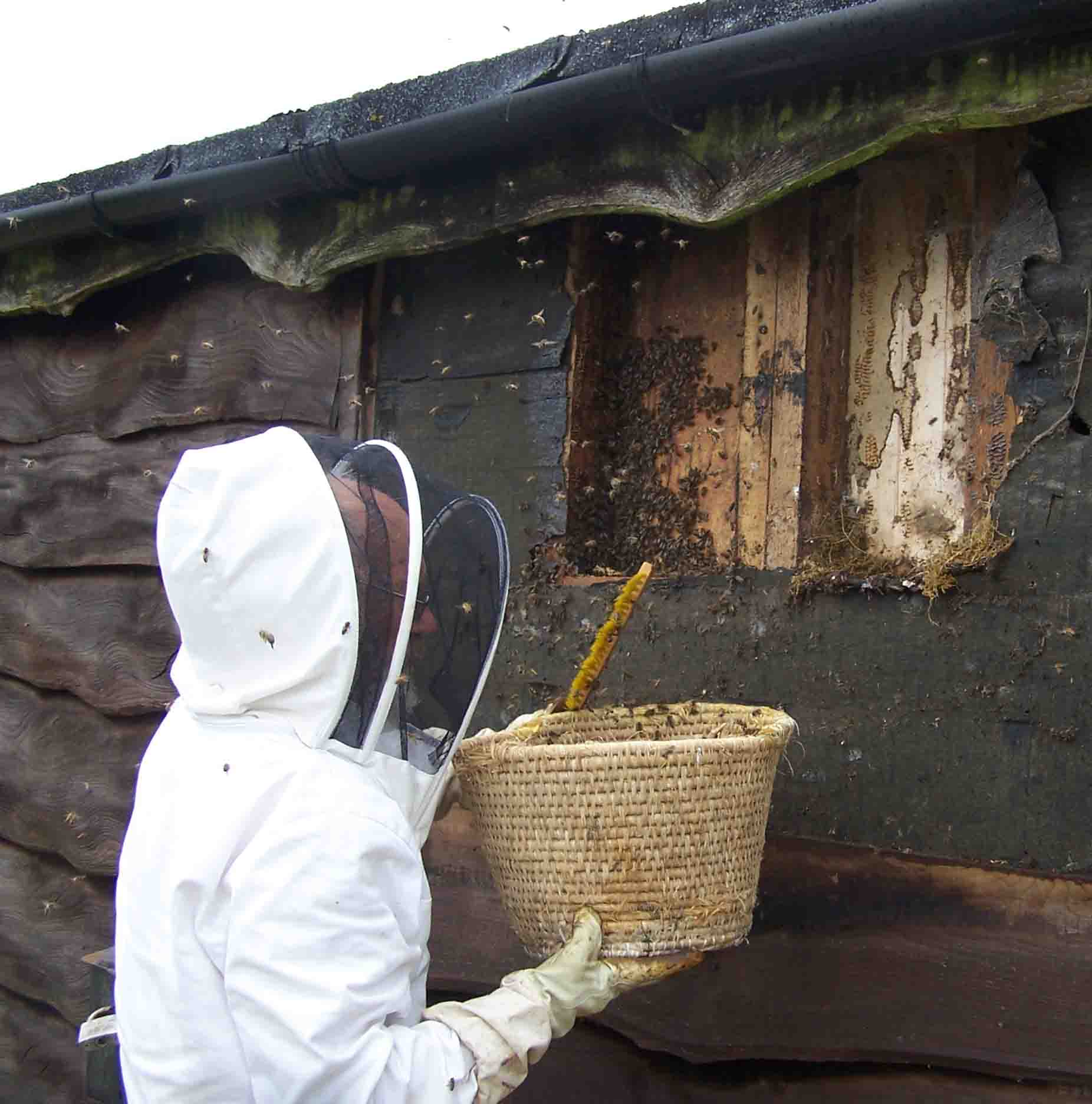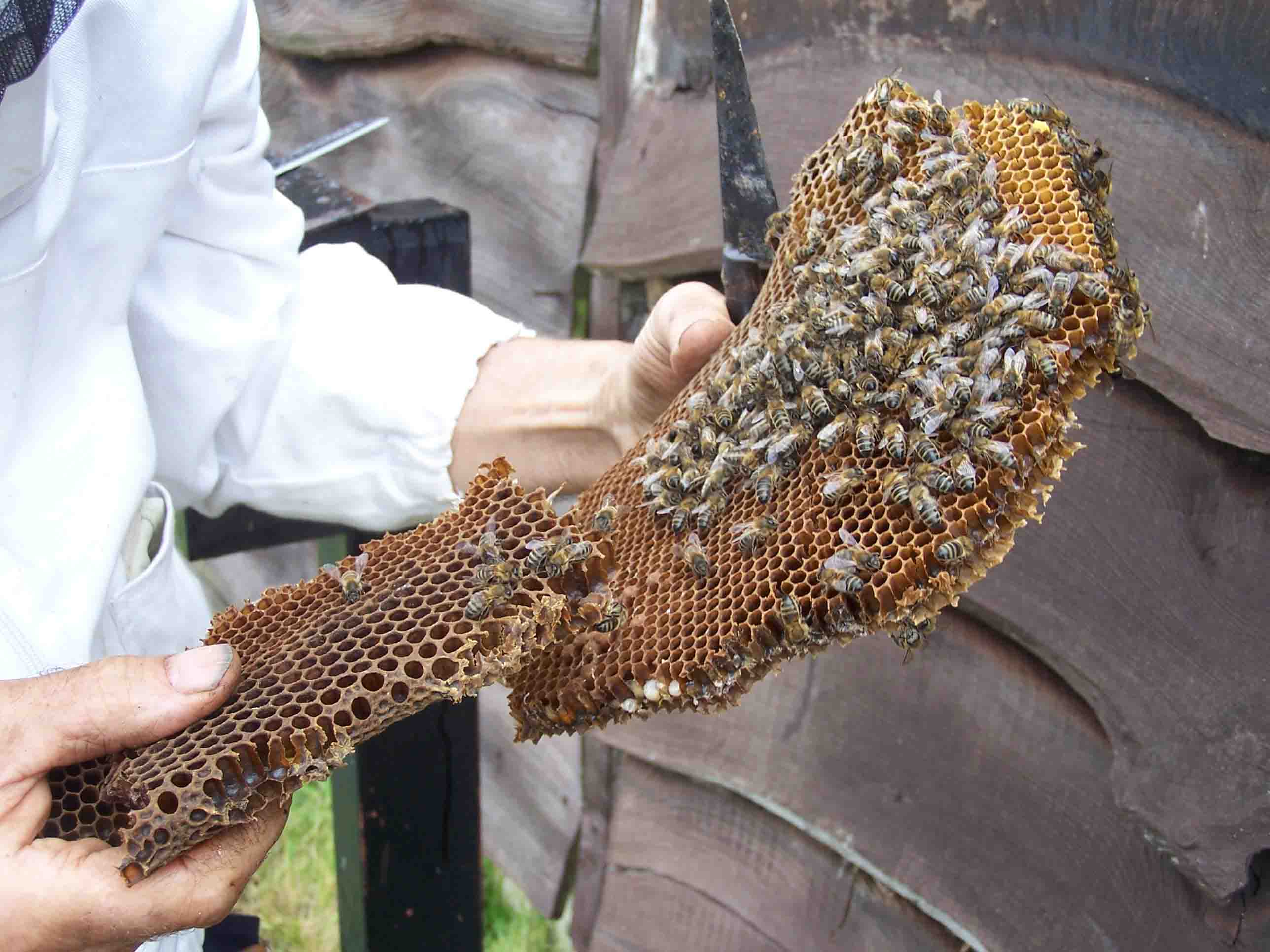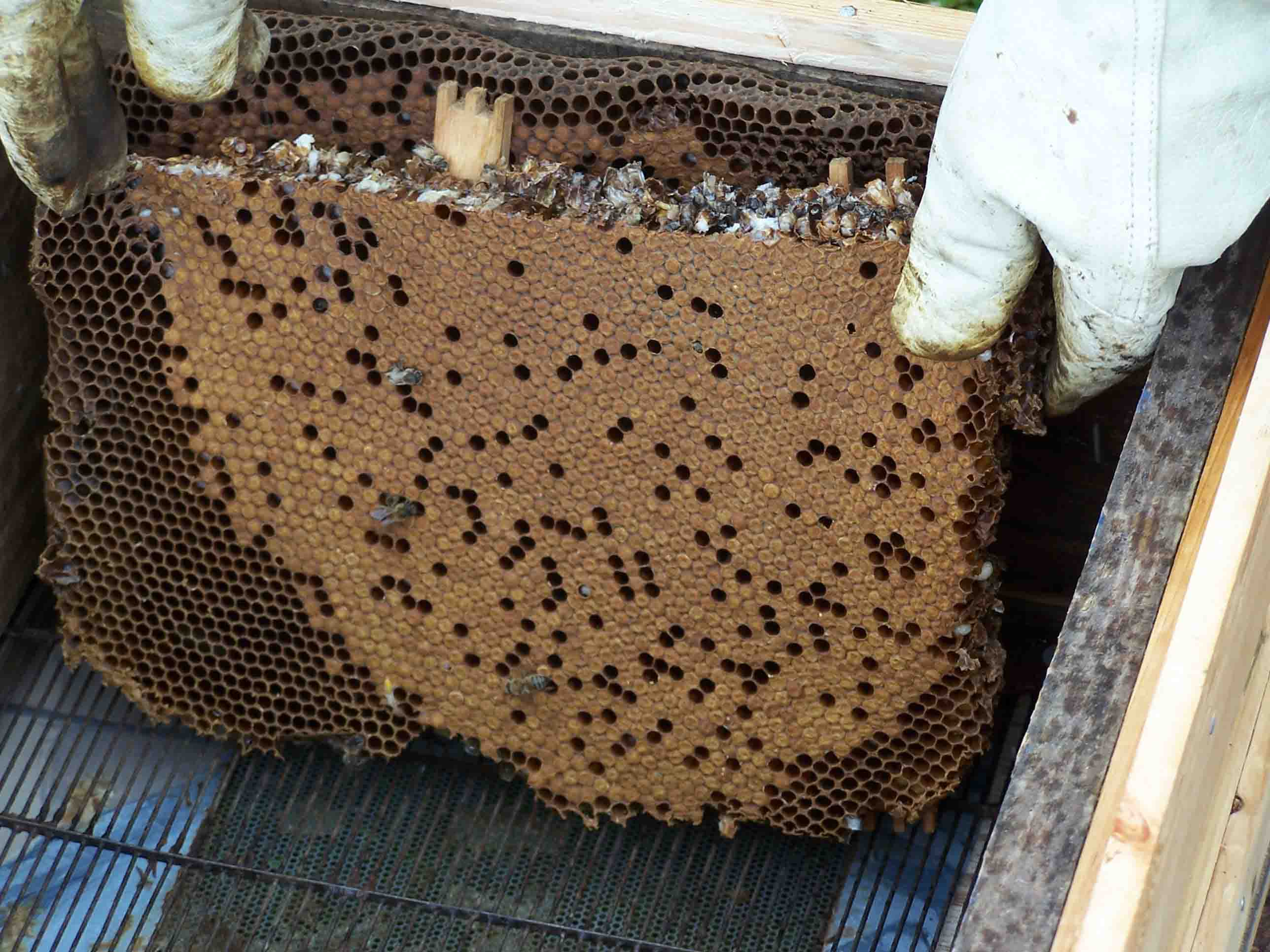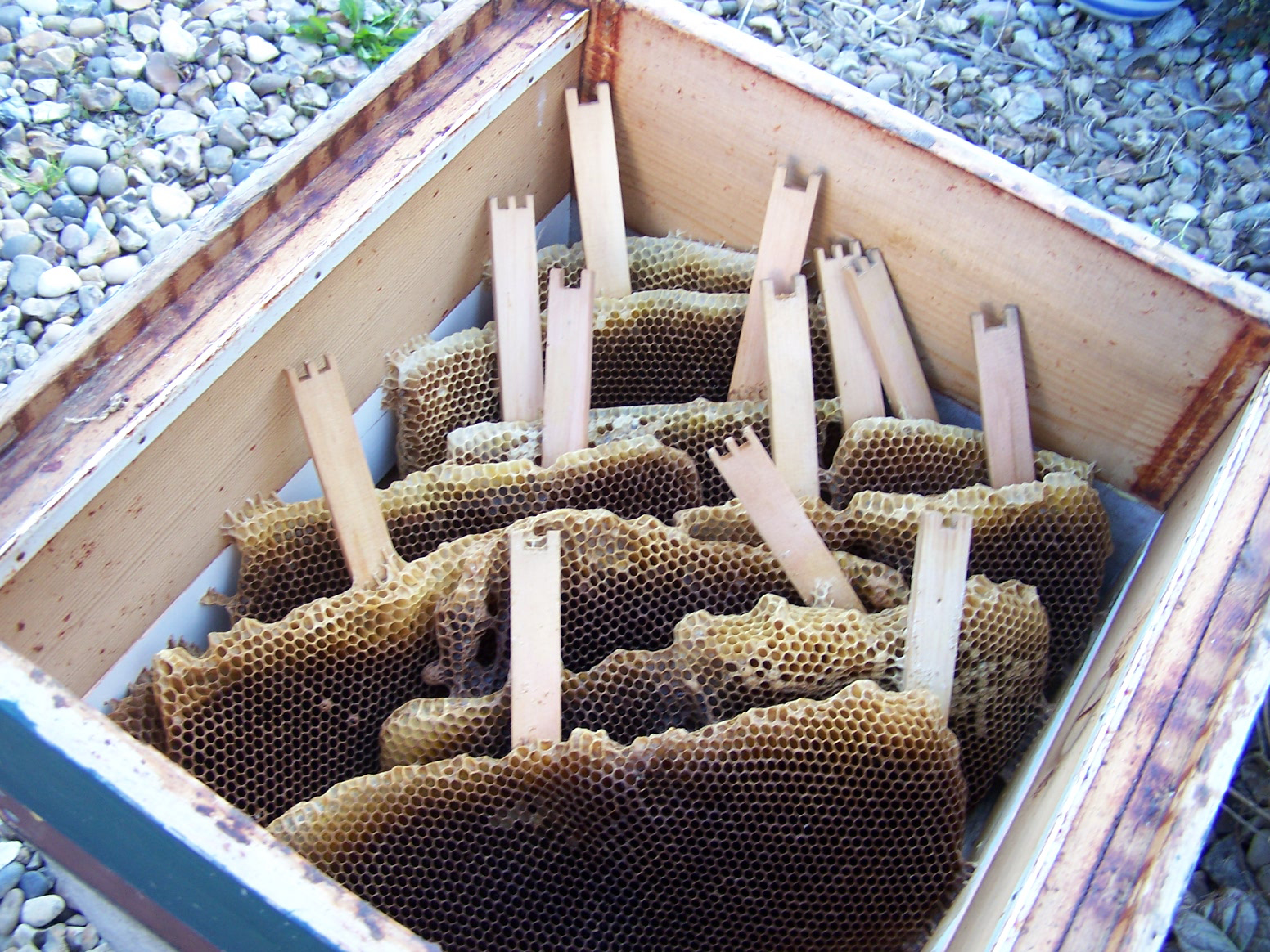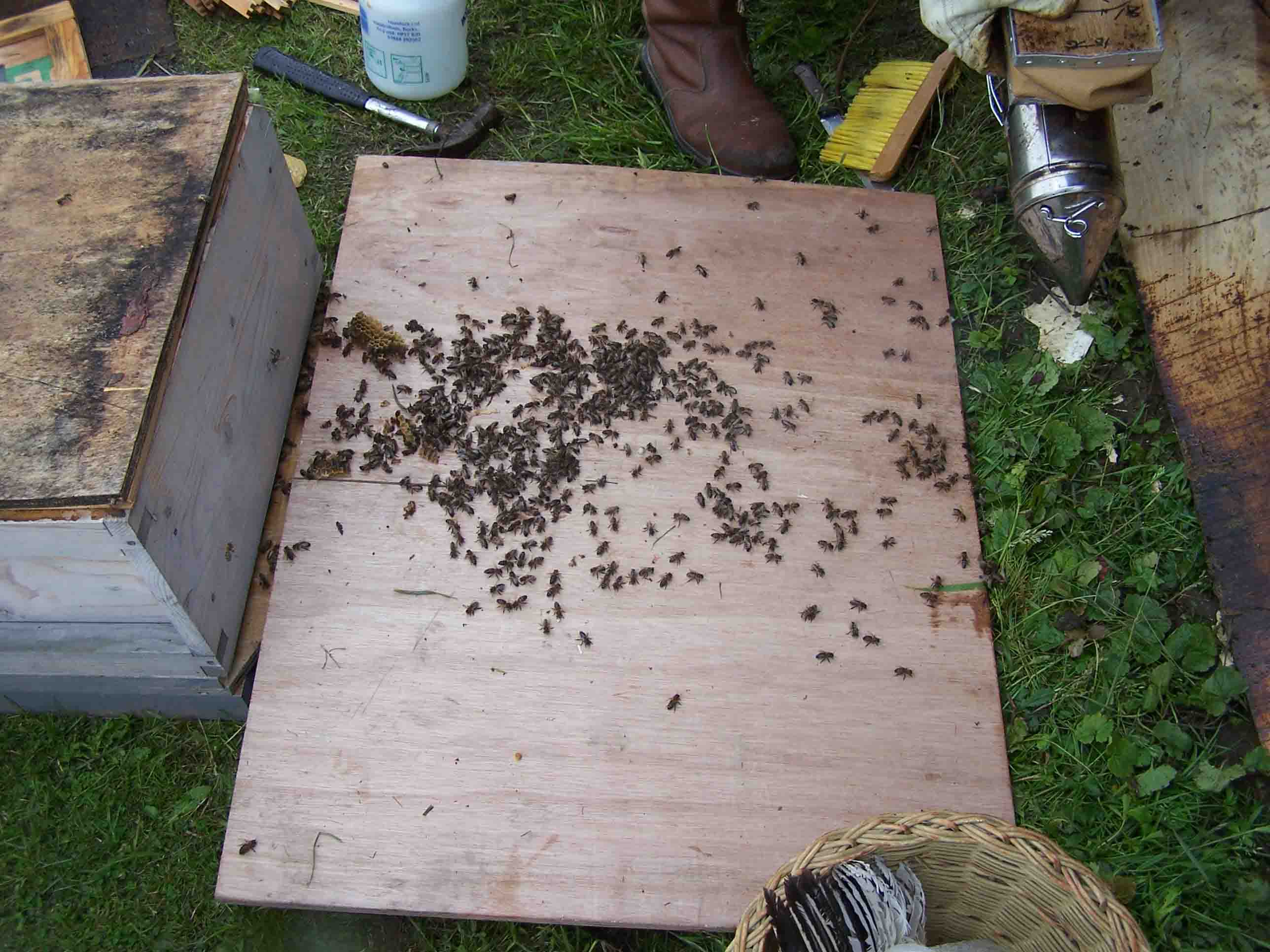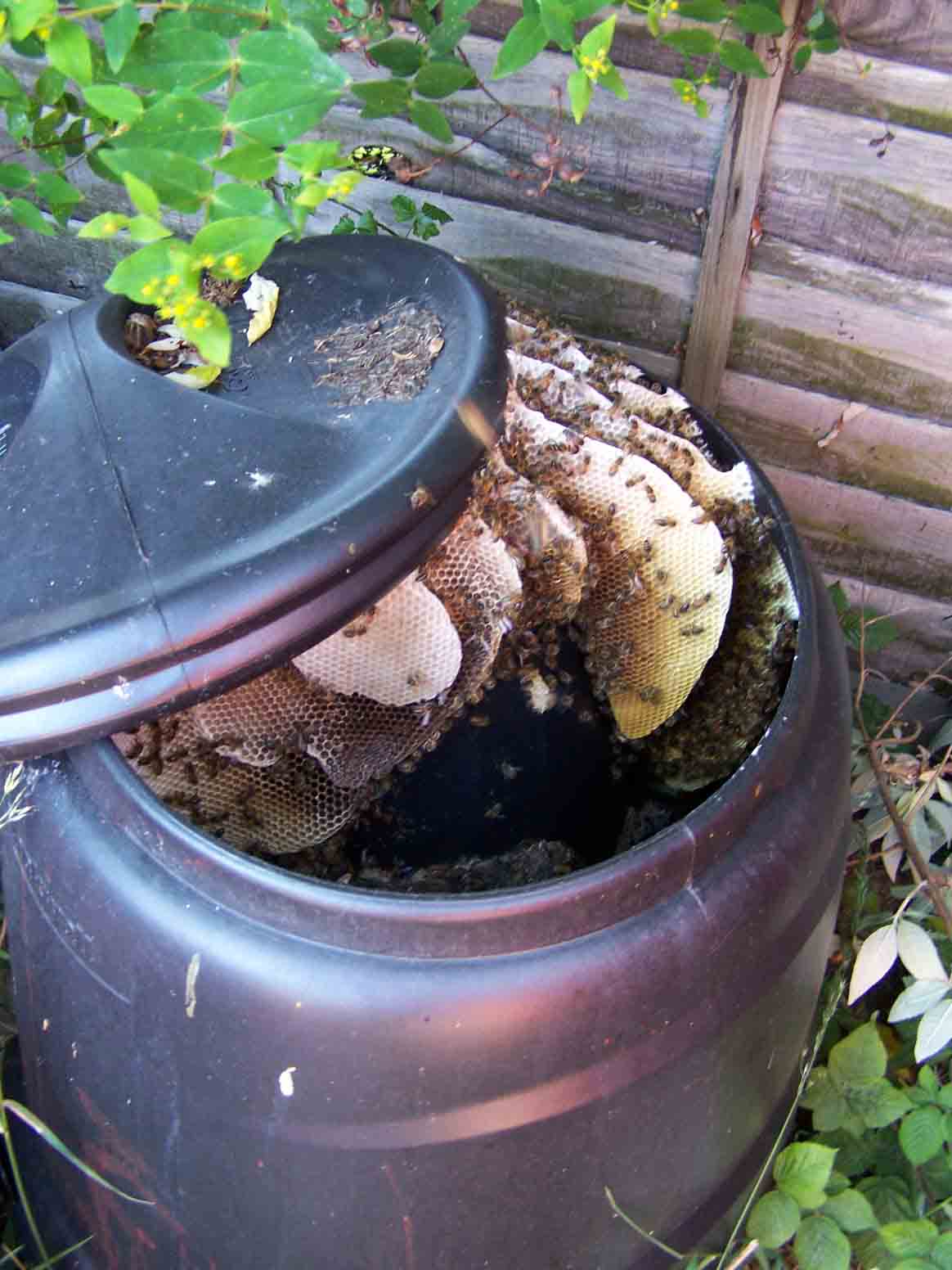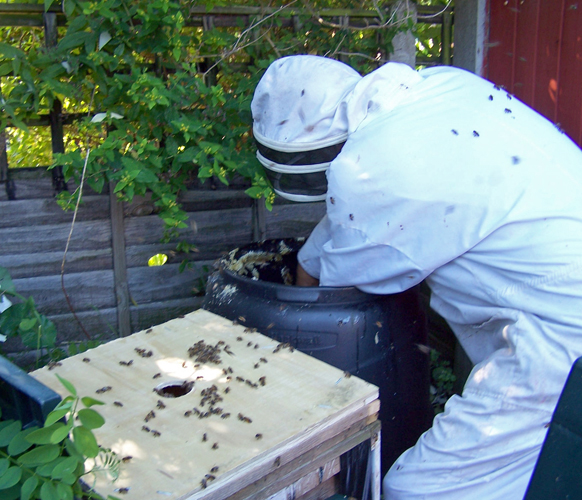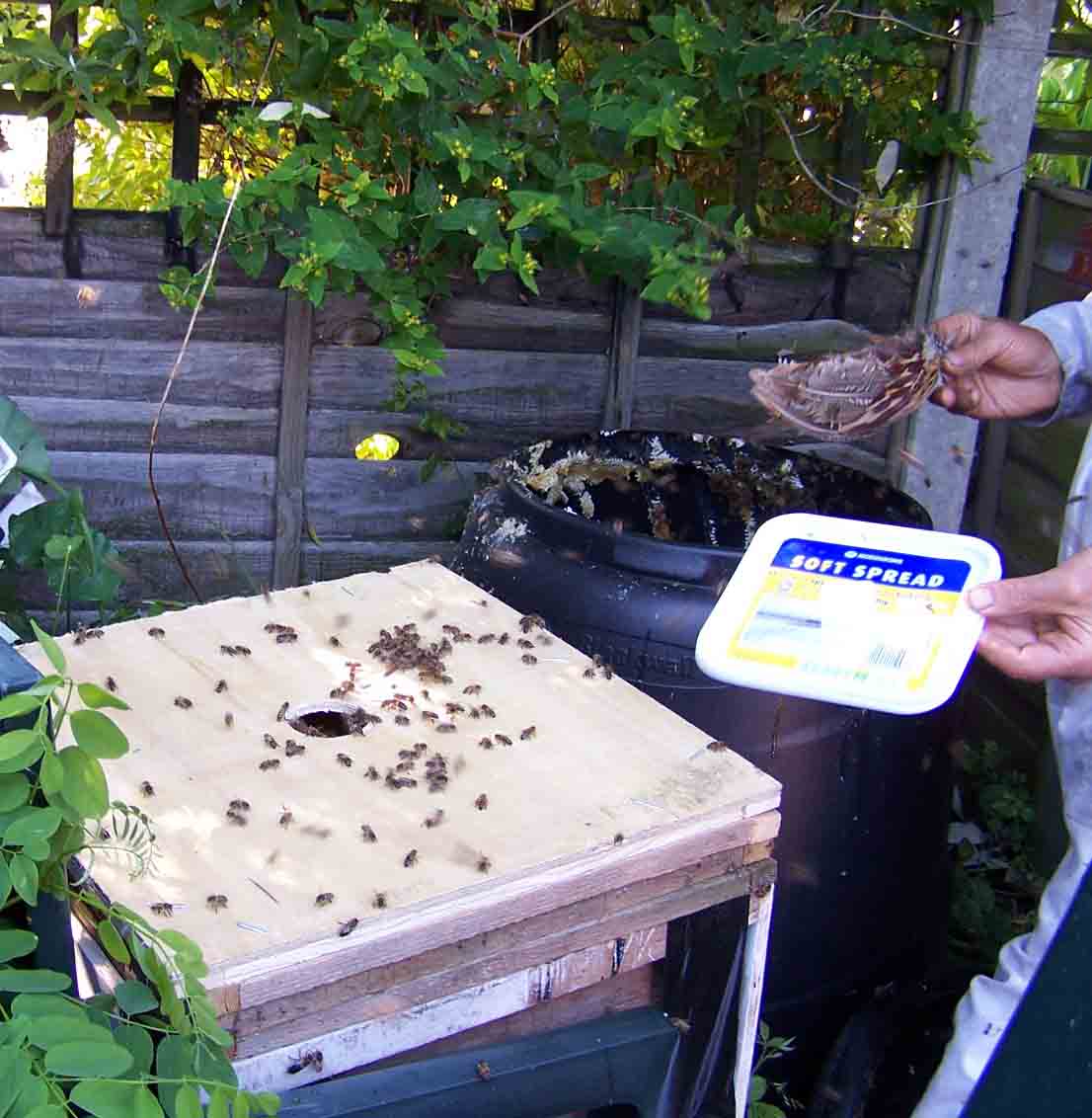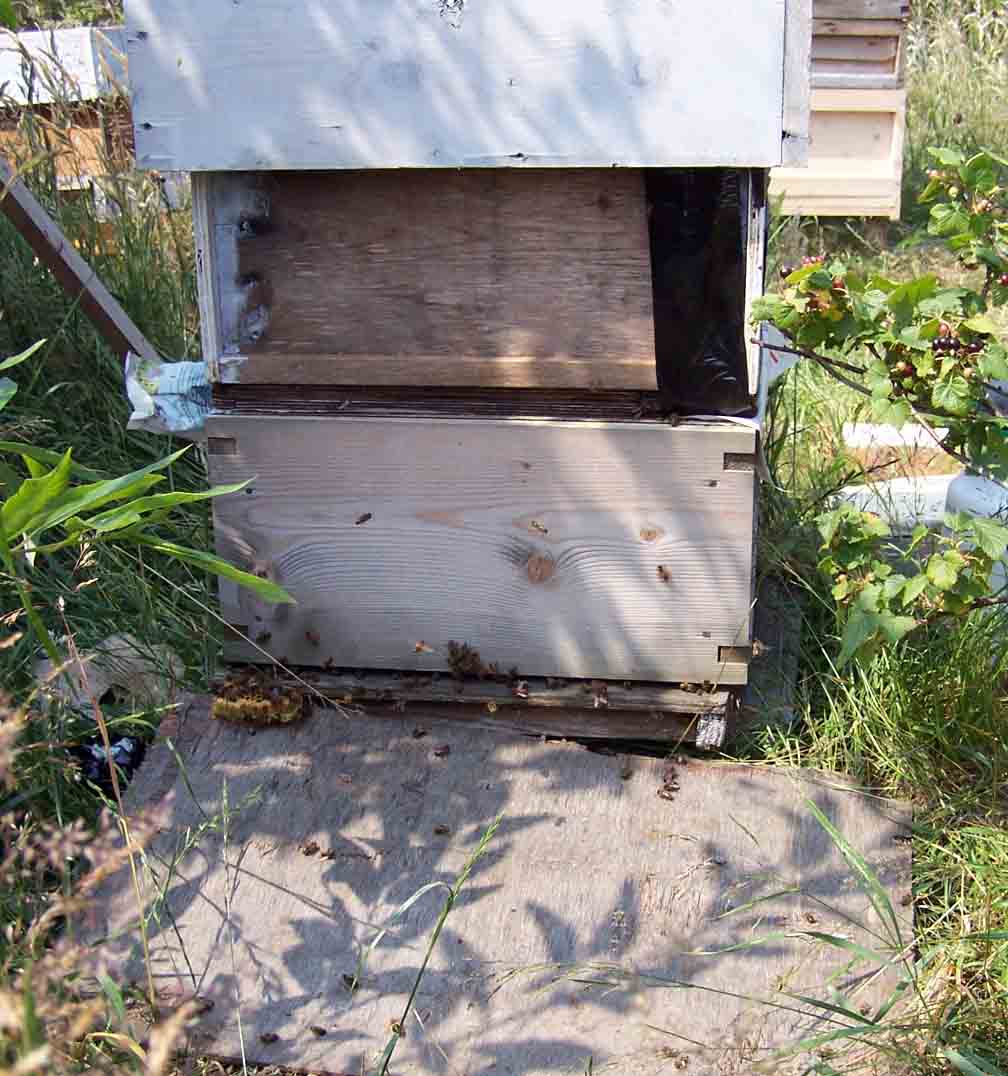.
Collecting bees from unusual places
During the beekeeping season we get many calls about bees. The largest numbers of calls are about wild bees, often small bumble bees nests in bird boxes or the corners of garden sheds. We do our best to convince folk to leave the bees alone, telling them that they are unlikely to be stung and that the bees will disappear in the autumn. That usually works but I have re-located a few bumble bees’ nests taking care to move them more than three miles. The bees in containers like bird boxes are easy to move only needing to be shut up in the evening. Nests in other places I pop in a small cardboard box and collect them after the bees have stopped flying (well wrapped in a sheet!). We also collected a window box full of solitary bees. They make individual cells fill them with food and an egg and leave them to hatch and fend for themselves. When all the bees had hatched out and flown the window box was ready to be used for flowers again.
I have also been asked to take honey bee colonies from odd spots including a compost bin, flat roof spaces and various chimneys and hollow spaces in houses. Sadly I have had to turn down some of those due to the inaccessibility of the bee combs and most these had to be killed.
I have had success however in relocating bees from the compost bin and roof space; the roof was being repaired and the builders were unhappy about the bees! My technique is to have a brood box with drawn comb, floor, queen excluder and solid top board plus another with a bottom board with a hole in it (and two more complete boards to close off the top and bottom of the stack. I cut the combs from the colony and brush the bees (with a chicken wing) into the brood box with the drawn comb. The combs that are mostly honey stores are put into large plastic boxes with lids. The combs of mostly worker brood are put into the other brood box with pieces of wood (brood frame sides) to separate them. Any drone brood gets fed to my chickens to keep the transfer of varroa down
When most of the bees are in the new hive I put the box with combs of brood over the new hive with the queen excluder between the two boxes to keep the queen confined below. I leave the assembly till the bees have stopped flying in the evening and move them to an apiary. I leave the hive well alone for a couple of weeks until the brood has hatched out from the old comb and check there is a laying queen in the bottom box. At that point I can brush any bees from the top box in front of the hive and treat the colony in the usual way making sure they have sufficient stores if there is no honey flow. These bees often carry a good load of varroa and so need treatment as soon as possible. However as they have survived without a beekeepers care for some years they may well represent a hardy varroa resistant stain (we hope!)
